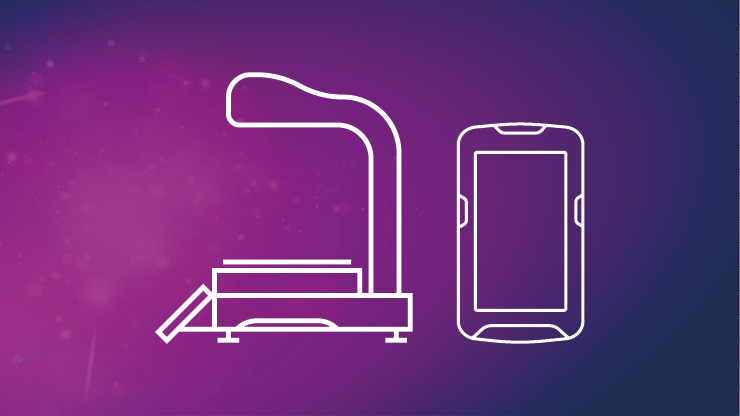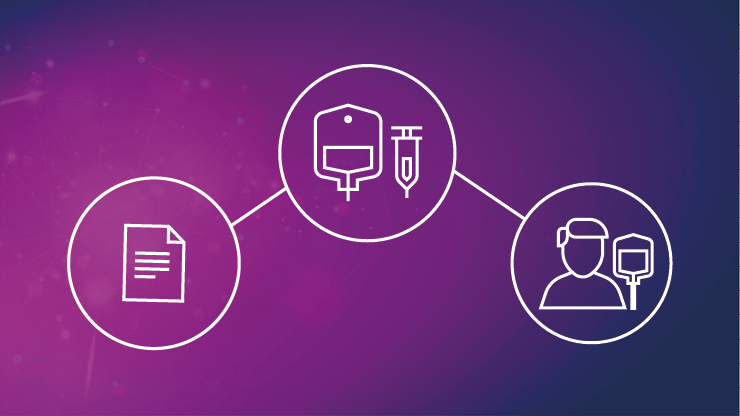What is digitalisation?
The process of digitisation1means to be converted from an analog format into a digital format. This process is usually associated with data and documents – photos and statistics, for example. However, digitalisation2means to take business processes and convert them to use digital technology; a business can step away from manual and paper-based systems and transfer to a totally digital format.
The digitalisation of healthcare is shaping the way we diagnose and treat patients. In recent years, an increase in the development of digital tools has transformed clinical decision-making, from early detection and diagnosis, to selecting treatment options, monitoring therapy, and evaluating outcomes.
In oncology, work by Basch et al3. and Denis et al4. demonstrated that the electronic capture of patient reported outcomes is superior to routine clinical care regarding patient satisfaction, quality of life and patient outcomes. The studies indicate that the digitalised approach is also cost-effective for the respective medical system. Overall, the conclusion of these studies suggest that the implementation of new digital technologies would measurably improve patient management.
Issues with manual and paper-based systems
There are many challenges facing oncology departments. Patient numbers are increasing, resources are limited, and treatment plans are often complex. Improving efficiency is key. However, this can be difficult for many organisations as they still rely on paper-based systems and manual processes.
Oncology staff often transfer patient information using paper files, which can be easily misplaced or misfiled. Miscommunication along the healthcare pathway could compromise a patient’s therapy, and potentially lead to harm to the patient. The World Health Organization cites poor communication between, and within healthcare providers as one of the contributors to delays in cancer diagnosis and treatment.5 A 2017 report on chemotherapy-associated medical errors found that 15 out of the 60 errors (25%) studied were related to mistakes in communication.6
Throughout the oncology pathway, manual processes often result in a lack of oversight. Consequently, it becomes difficult for organisations to measure, audit, and track performance. The benefits of having oversight of processes are clear. For instance, if the wastage of expensive oncology medication can be tracked and reduced, drug expenditure can be lowered. When treatment plans can be simply followed and traced, significant revenue on billing and reimbursements may be increased. And by tracking and tracing patients more efficiently through the system, it can help create capacity within the pathway.7,8

Right
patient

Right
medication

Right
dose

Right
time

Right
documentation
Digitalisation solutions that can transform efficiency and safety
The paper ‘Impact of a Barcode Medication Administration (BCMA) System Administration on Patient Safety’9 demonstrated that BCMA is a useful technology to check the five rights (right patient, right medication, right dose, right time, and right documentation) of medication administration in oncology, and could help nurses increase the time spent on direct patient care activities.
Reece et al. saw positive improvements throughout the oncology pathway with digitalisation10. The study reported that the implementation of a workflow software system resulted in a 74-fold increase in the detection of medical errors during the chemotherapy compounding process. It concluded that the system improved the accuracy of intravenous compounded products and potentially improved patient safety due to the increased detection of preparation errors.
Computerized Physician Order Entry (CPOE) reduces prescription errors compared to paper-based methods
Paper-based prescribing in oncology is prone to error. A 2014 study by Meisenberg et al.11 reported that “the practice of shared responsibility for chemotherapy orders is fraught with opportunities for miscommunication”. The authors analysed around 10,000 chemotherapy order sets sent from physicians to pharmacists and found that of the 2,216 order sets that were handwritten, 30.6% were considered “problematic”, requiring significant rework for clarification.
CPOE is an electronic process which allows physicians to prescribe patient therapy plans using pre-set protocols, performs automatic dosage calculations, and alerts physicians if a dose exceeds pre-defined limits.
Two independent studies showed that CPOE systems cut chemotherapy prescribing errors in hospitals by approximately two-thirds compared to paper-based prescribing.12,13 It has also been shown to improve legibility of documentation of medication administration, and enables standardised nurse-nurse and nurse-physician communication regarding medication administration.
Solutions that can improve efficiency through digitalisation
BD Cato™ is an integrated software solution that provides support throughout all stages of therapy, from long-term prescription planning to the preparation and the administration of chemotherapy drugs. Through interfacing with hospital information systems, it enables a more efficient workflow for oncologists, pharmacists, technicians, and nurses along the oncology pathway.
BD™ ReadyMed is a Barcoded Medication Administration digital solution to help ensure nurses fulfil the 5 rights of medication administration, whilst also ensuring accurate and timely documentation of it.
By integrating both BD Cato™ and BD™ ReadyMed into their intravenous chemotherapy preparation workflow, East Tallinn Central Hospital (ETCH) reported a significant improvement in the efficiency and quality of their oncology service14. They reported a reduced time for medication administration from ≈ 6 minutes per item to 41 seconds, with a mean average saving of 5 minutes and 19 seconds per item. Ülle Meren, head of pharmacy at ETCH, said they saw “improved cooperation with nurses and physicians” following the introduction of BD Cato™, and overall, she reported that the system was a “huge improvement … offering my team more confidence in their day-to-day work”.14
Another example of a BD solution increasing efficiency through digitalisation is the BD Bodyguard Duo™. The two independent infusion channels in the intuitive, user-friendly interface of the BD Bodyguard Duo™ infusion pump can help simplify the infusion of complex therapies.7,8
Digitalisation really delivers in oncology
Being able to track patient data simply, safely, and securely across the care pathway helps eliminate miscommunication and reduces clinical errors. Digitalisation through integrated software solutions for the prescribing, compounding, and administration of chemotherapy has shown to provide clearer and more accurate information for physicians, pharmacists, and nurses, improving communication along the entire patient pathway. These solutions can help improve efficiency of the oncology department, whilst also helping reduce errors and improve safety.
Unmistakably BD Oncology

Oncologist
Contact us

